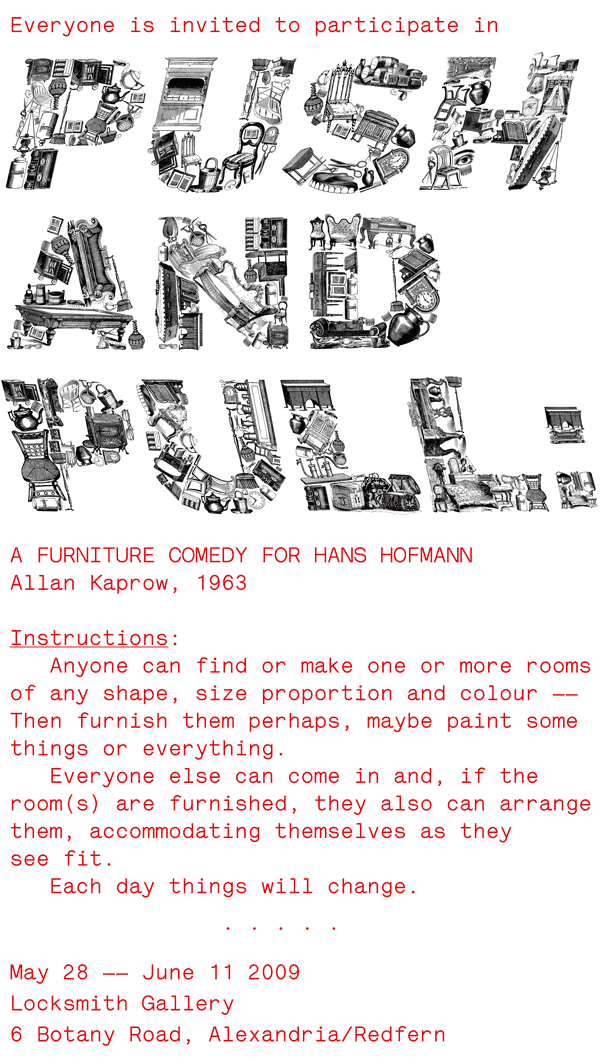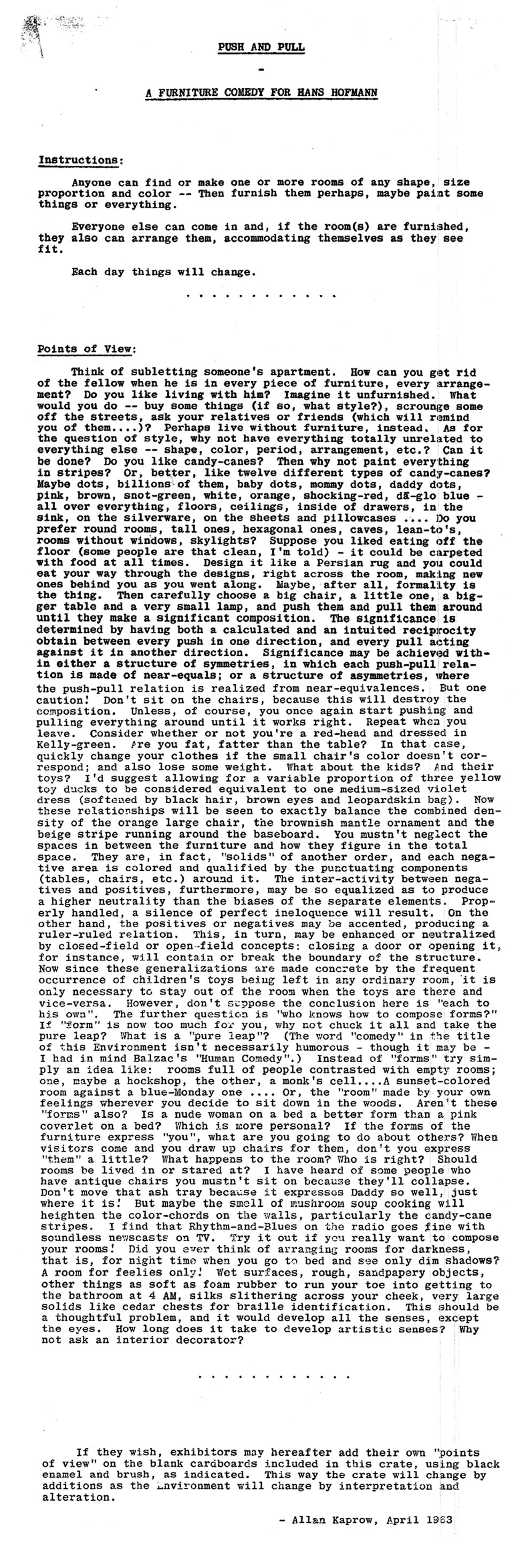Day One – Friday 30th May: Timelapse and Notes
Posted: May 31st, 2009 | Author: lucasmichaelihlein | Filed under: Day 1, timelapse | 2 Comments »
Alba turned up bang on 1pm to see the anarchic harmony left over from the opening night. She immediately had the desire to tidy it. So Astrid and Alba set about composing the first inhabitable and domestic iteration of the room. The still-to-be-constructed Ikea couch swapped places with the massage table (which was to ably perform the role of a lounge room table). The sideboard cabinet (which having been put on its side to become a display cabinet for Lizzie’s red shoes) was returning to its more natural horizontal axis on a sidewall. I asked Astrid and Alba what their compositional intention was and they said they were trying to fill up what they perceived to be a bareness on the white walls. They tore out colour drawings from a book left in the space and this became a wordless tableau of fairy tales. Underneath this they composed two poems, Dick & Cockchafer, cut-out from the same book. Another compositional idea of A&A’s was to do with the creation of inhabitable space, to have open space for easy movement and to make the space more inviting to people. Various scraps of things scattered on the floor were removed because they were not considered to be contributing to the space. The car bumper bars that someone had found the night before in the alley behind the mechanics were immediately singled out as lacking value or purpose in the composition of the room, but nobody felt strongly enough to haul them back. Astrid’s compositional obsession, as evidenced by this, was the yellowness of the primary school chairs.
complexity, weather
Posted: May 31st, 2009 | Author: lucasmichaelihlein | Filed under: Day 1 | 1 Comment »The whole thing is calibrated according to time’s way of walking sideways out of the event. (John Ashbery, The New Spirit, 1972).
The space is marked with traces of the previous nights’ frenetic movement. Like waking up the next afternoon after a wild house-party, the mess is pleasant memory, ghosts of the movements that made it. Zoe’s giraffes, Astrid’s letraset poem, Hilik’s knives, Simon and Keg’s cardboard ladder and the gaffer soup can. With the traces linked up to the creator-ghosts who left them, you get this sense, if you think about it as a composition, of anarchic harmony. Anarchic harmony is something Astrid once wrote, or perhaps she got it off John Cage, but in any case it reminds me of a wonderful etymological distinction that was pointed out to us one day by the great artist and teacher Ross Gibson. He talked about how the word complicated comes from the Latin plicare, which means to fold, and that complex comes from plectere which means to plait. So a complicated thing is a single thing that is folded, for example, an oragami swan is complicated from one piece of paper. A complex thing is something that is plaited, that is, has multiple interlaced strands that form a kind of network, like a Turkish carpet. So the anarchic harmony of the room is complex rather than complicated, because it is composed of many strands, without a master plan or single piece of paper that organises it. And I suppose for this reason many people would see this Pushed and Pulled space, as we found it on the day after the opening, as disorder, as mess. But complexity is not chaos or anarchy in the usually (and wrongly) understood sense of the terms. Chaos and anarchy are not total disorder, complete lack of relations, but are rather the order of relations themselves, just as in ecological systems. And Push and Pull is an ecological system. Ecological systems are not just what happens in the wilderness, untouched by the evil hands of humans, they are everywhere, where humans and non-humans exist side-by-side, in complex relations.
invitation / call-out
Posted: May 11th, 2009 | Author: lucasmichaelihlein | Filed under: publicity | 2 Comments »

Recent Comments